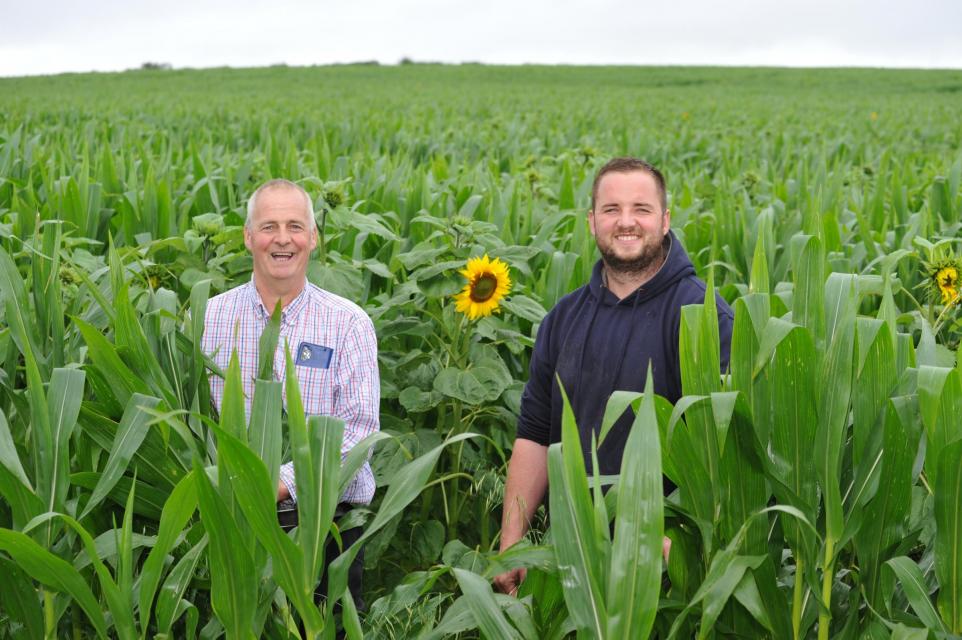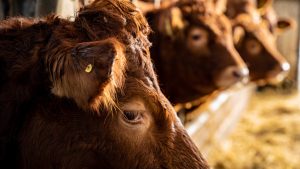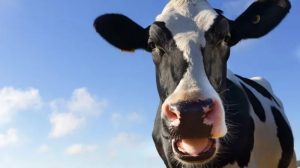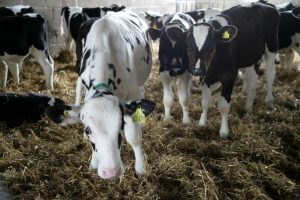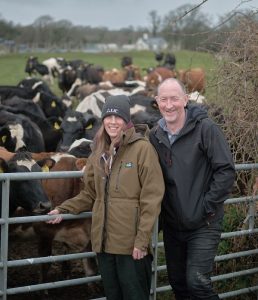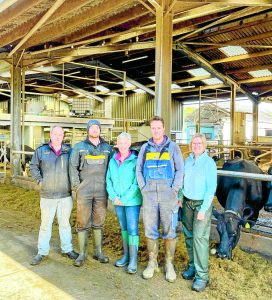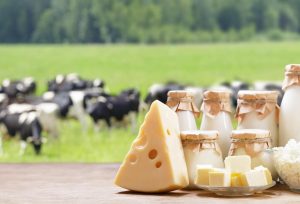
Companion cropping maize with sunflowers is helping a dairy farm reduce costs associated with purchased protein.
Dyfrig and Elin Griffiths and their son, Llyr, grow 165 acres of maize, 500 acres of grass silage, 75 acres of barley and 80 acres of hay across 1,275 acres.
Their herd, which yields an annual average of 9,200 litres a cow, is grazed through the summer but the high yielders are housed at night to give greater control of feed consistency and intakes.
Zero grazing on the shoulders of the season helps to increase the volume of milk that can be produced from forage.
The principal protein source in the TMR is a rumen-protected rapeseed expeller.
As protein is one of the most expensive components in the ration, reducing overall reliance on this purchased input is a financially attractive option for the business.
Sunflowers are naturally high in crude protein and could displace some of that purchased product.
This year, to explore if this could work without compromising production, 20 acres of the maize crop has been intercropped with sunflowers, supported by the Farming Connect Try Out Fund, an initiative that funds individuals and groups of farmers and growers to experiment with ideas and bring them to life.
A mix of 80% maize and 20% sunflower was drilled, a ratio selected because a higher percentage of sunflowers could lead to shading.
The farm’s agronomist, Lawrence Couzens, said one of the biggest challenges with bi-cropping is weed control as its restrict herbicide use.
“There is only the option of one pre-emergence spray and then you have to close the gate,’’ he said.
The weeds in the crop at Tafarn y Bugail were outpaced by both crops.
There are two main diseases that sunflowers are susceptible to – botrytis and sclerotinia.
Botrytis is a head rot induced by warm, wet conditions while sclerotinia rots the plant stem.
Lawrence advises that if botrytis occurs in a sunflower crop, glyphosate can be applied to dry down the crop to speed up harvest, but this is not an option in a maize bi-crop.
“In this situation the only option is to harvest are early as possible,’’ he said. “Sclerotinia is generally more manageable.’’
Slug, rabbit and pigeon damage can be a problem at emergence, he added. “Aphids can be an issue as the plant grows but they don’t seem to affect the yield.’’
Although the crop at Tafarn y Bugail has yet to be harvested, the sunflowers are expected to produce a good yield – data from Canada where pure stands of sunflowers are grown shows yields of around 19t/acre.
“A lot of that would be water so the later than they can be harvested the better, to get the dry matter (DM) level up,’’ said Lawrence.
Maize analyses at around 8% protein but including sunflowers in the mix should increase the protein level overall to 11-12%.
That protein is mainly rumen degradable protein (RDP) there, to target a lower crude protein diet and reduce total inputs, a good quality bypass protein will also need to be fed, advises dairy nutritionist Iwan Vaughan, who formulates the ration at Tafarn y Bugail.
“Maize and sunflowers combine quite well because if you can bring protein in as an RDP plus starch from the maize you are utilising more in the rumen, driving rumen fermentation and microbial protein synthesis,’’ he said.
It is important to get the crop analysed, he added. “As long as you have an analysis the nutritionist can work around it but the cow will soon tell you if she is happy or not, she is the first judge.
“In terms of percentage, you probably wouldn’t want to go above 20-30% of this forage within the total forage in the diet because sunflowers contain a lot of oil.’’
Sunflowers are high in fibre too and provide a good balance to multi-cut silage.
You can now read the most important #news on #eDairyNews #Whatsapp channels!!!
🇺🇸 eDairy News INGLÊS: https://whatsapp.com/channel/0029VaKsjzGDTkJyIN6hcP1K
